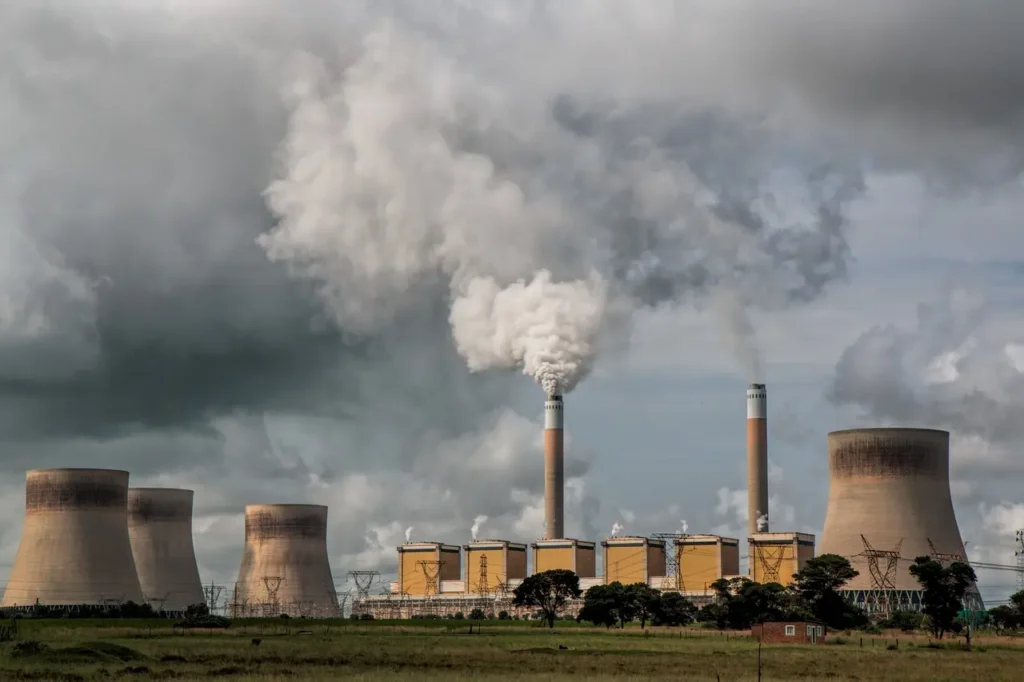
Oil & Petroleum Explained: The Complete Guide
10 minute read • Last update April 2024
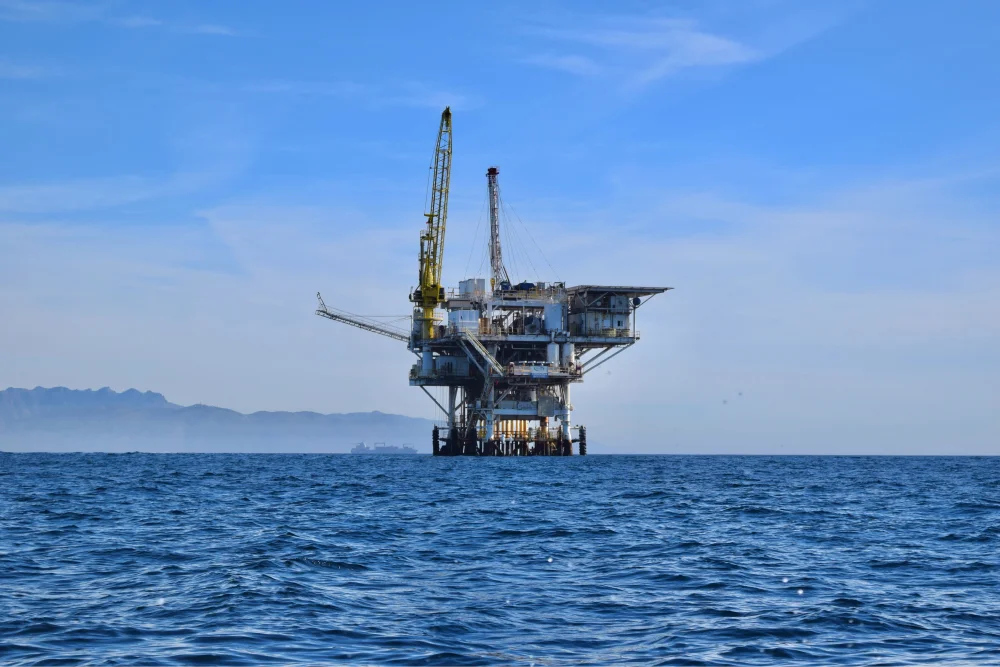
In this article
Oil is the main source of energy in the transportation sector, and it’s one of the biggest industries in the world. Unfortunately, oil is a significant source of carbon dioxide emissions. So, we have to know: what is oil energy, and how does it impact our environment?
What is oil energy?
Oil energy refers to the energy derived from the extraction, refining, and utilization of crude oil, also known as petroleum. It is a fossil fuel that contains hydrocarbons, which are organic compounds composed of hydrogen and carbon atoms. Oil energy plays a significant role in meeting global energy demands and is used for various purposes, including transportation, electricity generation, heating, and the production of numerous everyday products.
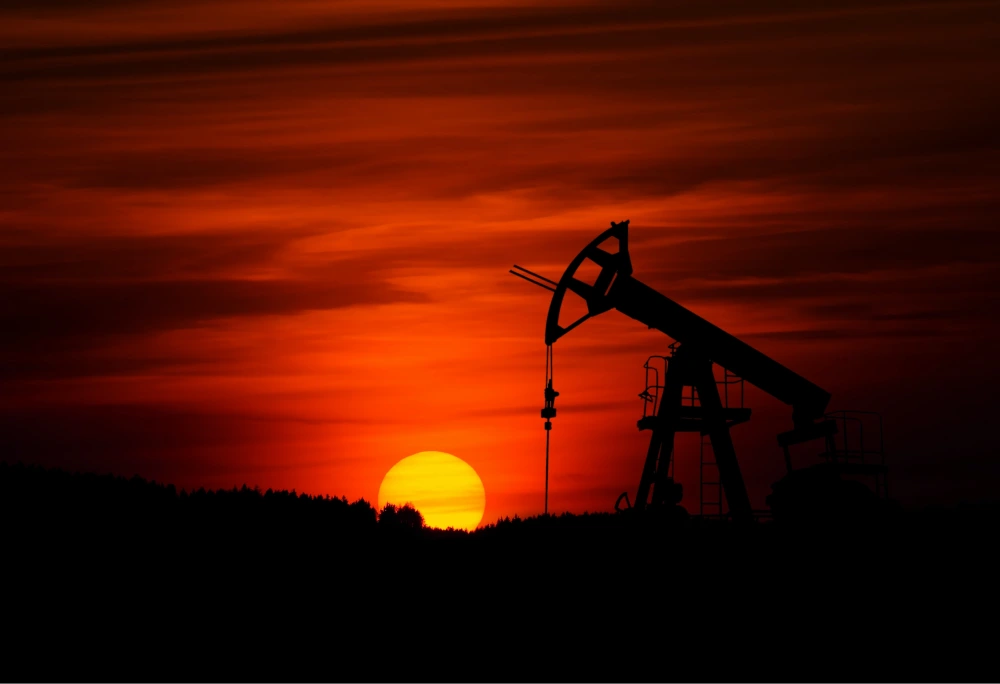
Where does oil come from?
Crude oil and petroleum are types of fossil fuels because they are made up of hydrocarbons that formed from ancient plants and animals that lived in the ocean millions of years ago. Before dinosaurs even existed, these tiny organisms called diatoms died and settled on the ocean floor. Over time, they were buried by layers of sand, silt, and rock.
As the layers piled up, the heat and pressure from the earth transformed the remains of these plants and animals into what we now know as crude oil or petroleum. The word “petroleum” actually means “rock oil” or “oil from the earth.”
Humans have been aware of oil for centuries, but its significance as an energy source grew significantly during the Industrial Revolution in the 18th and 19th centuries. The discovery of abundant oil reserves, such as those found in Pennsylvania, USA, and later in regions like the Middle East, revolutionized energy production. The invention of the internal combustion engine further fueled the demand for oil, especially in transportation.
How is oil formed?
Oil is formed through a natural process that takes millions of years. It starts with the accumulation of organic matter, including microscopic marine plants and animals, on the ocean floor. Over time, as more sediment layers build up, the organic matter becomes buried deeper underground.
Under the immense pressure and high temperatures found deep within the Earth’s crust, the organic matter undergoes a transformation. This process, known as diagenesis, converts the organic matter into a waxy substance called kerogen. With further heat and pressure, the kerogen is subjected to a process called catagenesis, where it is broken down into liquid and gaseous hydrocarbons.
These hydrocarbons migrate through porous rocks, such as sandstone or limestone, until they reach impermeable layers that trap them underground. Over millions of years, the hydrocarbons continue to mature and transform into crude oil and natural gas deposits.
The geological conditions, including the presence of suitable source rocks, reservoir rocks, and traps, determine the location and size of oil deposits. Exploration and drilling activities are carried out to identify and extract these reserves for energy production.
How does oil energy work?
Oil energy is produced by combusting oil in oil-fired power plants. The combustion process produces steam, which turns turbines and spins a generator that produces electrical power.
How does oil actually produce energy?
First, oil is extracted from underground reservoirs through drilling or fracking. The same process is often used to extract natural gas as well. The extracted oil goes through several steps to prepare it for use.
Once the oil is extracted and separated from natural gas, it is transported to refineries. At the refineries, the oil goes through a refining process to break it down into different components and remove impurities. This refining process produces various petroleum products like gasoline, diesel, jet fuel, heating oil, and chemicals.
After the oil is refined, it can be transported either directly to consumers or to oil-fired power plants. At an oil-fired power plant, the oil is used to generate energy through a combustion process:
- Combustion: The oil is burned in a combustion chamber of a boiler, producing intense heat.
- Steam Generation: The heat from the combustion process converts water into steam.
- Turbine Operation: The steam is directed into a turbine, a device with rotating blades. As the steam flows over the blades, it causes them to spin at high speeds.
- Electricity Generation: The spinning blades are connected to a generator, which produces electricity as it rotates.
- Steam Condensation: After passing through the turbine, the steam is condensed back into water and returned to the boiler chamber to be reheated and used again.
Will we run out of oil?
The global capacity of oil energy production is substantial, but the world consumes a significant amount of oil, with the United States and China being the largest consumers.
Oil is a finite resource, and if we continue using it at the current rate, it is estimated to last for about 50 more years. That’s why there is an increasing focus on finding sustainable and alternative energy sources to reduce our reliance on oil and ensure the long-term stability of the global economy.
The oil extraction and energy production process
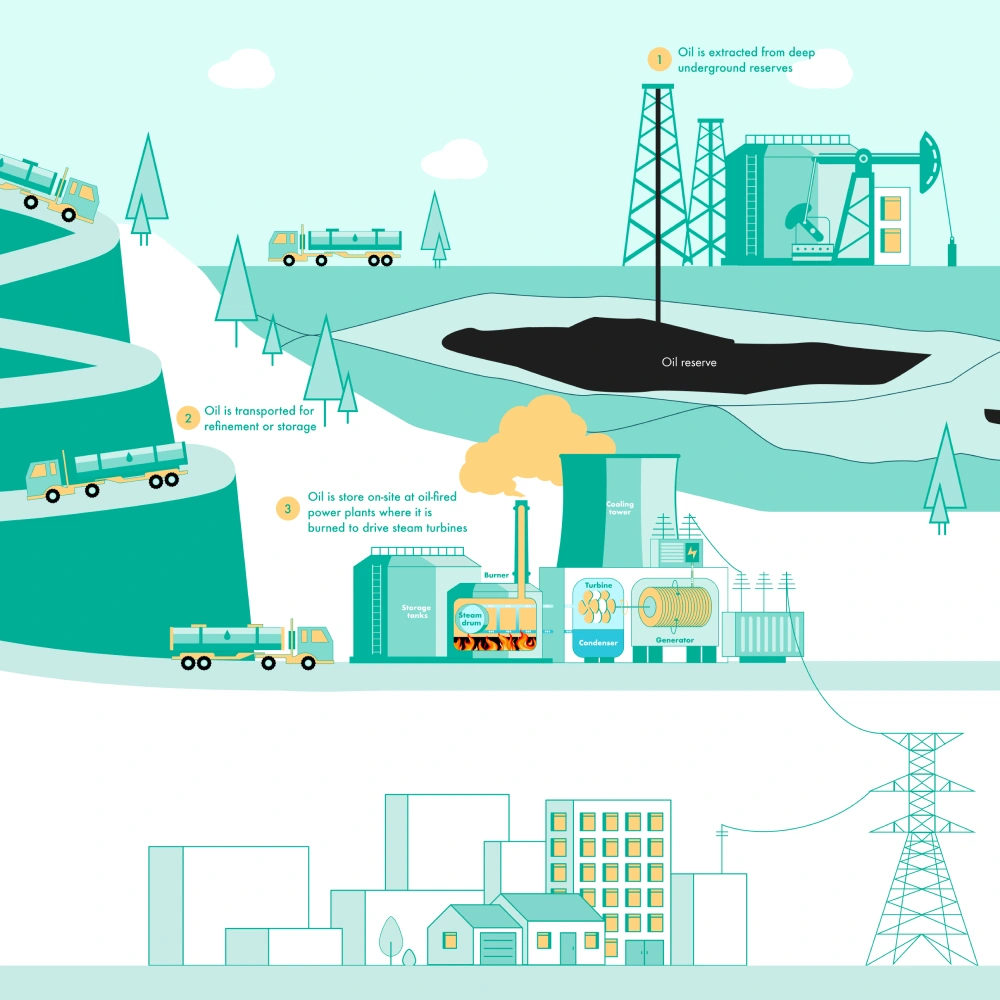
Oil energy extraction and production involve several key steps that span from exploration to various applications:
- Exploration and Drilling: The process begins with exploration, where geologists and geophysicists study rock formations and conduct surveys to identify potential oil reservoirs. Advanced technologies like seismic imaging help in locating underground oil reserves. Once a potential site is identified, drilling operations commence. Wells are drilled into the ground using specialized equipment to reach the oil reservoirs deep beneath the Earth’s surface. Techniques like traditional drilling or hydraulic fracturing (fracking) may be employed depending on the geological characteristics of the reservoir.
- Refining Process: After the oil is extracted from the reservoirs, it undergoes a refining process to transform it into usable products. Refineries receive crude oil and use various refining techniques to break it down into different components. These components include gasoline, diesel, jet fuel, heating oil, and chemicals. The refining process involves distillation, where the crude oil is heated, vaporized, and separated into different liquid fractions based on their boiling points. Additional processes like cracking, reforming, treating, and blending are carried out to obtain desired products with specific properties and remove impurities.
- Transportation and Storage: Once the oil is refined into different products, it needs to be transported and stored. Transportation can occur through pipelines, tanker ships, railroads, or trucks, depending on the distance and location. Special precautions are taken to ensure safe transportation and prevent leaks or spills. Storage facilities such as tanks and terminals are used to hold the oil products before they are distributed to end consumers. These facilities provide a strategic reserve and allow for smooth supply during periods of high demand or disruptions in production.
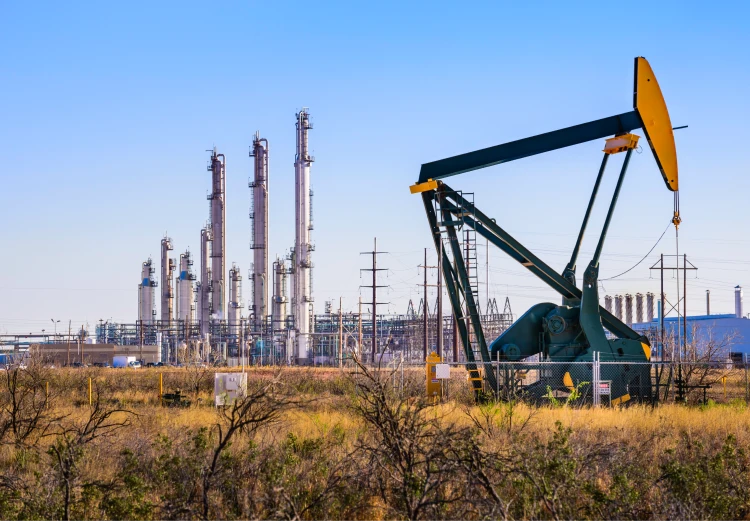
Oil energy applications: what is oil used for?
Oil energy finds diverse applications across various sectors, including transportation, heating, and industrial processes.
Transportation
One major use of oil energy is in transportation. Gasoline and diesel derived from crude oil are commonly used as fuels for cars, trucks, motorcycles, ships, and airplanes. These fuels power internal combustion engines and enable transportation on land, water, and air.
Heating and electricity
Oil energy is also utilized for heating purposes in residential, commercial, and industrial settings. Heating oil is a commonly used fuel in furnaces, boilers, and heating systems. Oil-fired power plants generate electricity by burning oil and using the produced steam to power turbines and generators.
Industrial processes
Oil energy plays a vital role in various industrial processes. It is used as a fuel in manufacturing plants, refineries, and chemical facilities. Oil-fired furnaces and boilers provide heat for industrial operations such as metal refining, cement production, and food processing.
Petrochemicals and plastics
Crude oil serves as a feedstock for the production of petrochemicals, which are the building blocks for many products. Petrochemicals derived from oil are used in the manufacturing of plastics, synthetic fibers, fertilizers, solvents, lubricants, and countless other everyday products.
The environmental impact of oil energy & other disadvantages
Oil energy can be extremely advantageous in some ways, but we have to consider the negative impact of remaining reliant on oil.
Environmental impact
One significant disadvantage of oil energy is its environmental impact. The extraction, refining, and combustion of oil can release greenhouse gasses, such as carbon dioxide and methane, contributing to climate change. Oil spills during transportation or accidents at drilling sites can cause severe damage to ecosystems and wildlife.

Non-renewable resource
Oil is a non-renewable resource, meaning it is finite and will eventually deplete over time. As oil reserves diminish, extracting them becomes more challenging and costly. This dependence on a finite resource raises concerns about energy security and the need for transitioning to sustainable and renewable alternatives.
Geopolitical issues and dependency
The global oil market is influenced by geopolitical factors, leading to potential conflicts and instability. Countries heavily dependent on oil imports may face economic vulnerabilities and geopolitical risks. Fluctuations in oil prices can impact energy costs, inflation rates, and global economies. Oil has also been a major factor in many wars, including the Iran-Iraq War, the Gulf War, and the Syrian Civil War. These wars have caused death and destruction and have destabilized the region.
The advantages of oil energy
We’ve already mentioned that oil energy isn’t a very clean or sustainable source of energy, but it has some advantages that we have to consider:
High energy density
One of the primary advantages of oil energy is its high energy density. This means that a relatively small amount of oil can generate a significant amount of energy, making it an efficient source of fuel for various applications.
Easy transportation and storage
Oil is a liquid form of energy, which makes it relatively easy to transport through pipelines, tanker ships, railroads, or trucks. It can be stored in tanks and terminals, allowing for convenient distribution and supply management.
Wide applications and usage
Oil energy has diverse applications and uses across multiple sectors. It is used as a fuel for transportation, providing energy for cars, trucks, airplanes, and ships. It is also utilized for heating purposes in residential, commercial, and industrial settings. Additionally, oil is an essential feedstock for the production of various petrochemicals and plastics.
Fossil fuel alternatives: what can we utilize instead of oil?
Fortunately, there are several alternatives to oil energy at our disposal. While none of these are complete without cons, there are many environmental benefits to switching to alternative energy sources.
Natural gas energy
Natural gas is a fossil fuel similar to oil but with half of its carbon emissions. There are abundant reserves of natural gas across the U.S., and it’s versatile enough to use in a number of applications. Natural gas is far cleaner burning than oil, which reduces greenhouse gas emissions. On the downside, it is still a fossil fuel and, therefore, not a permanent energy solution. However, it can be a fantastic bridge fuel until we make a switch to renewables.
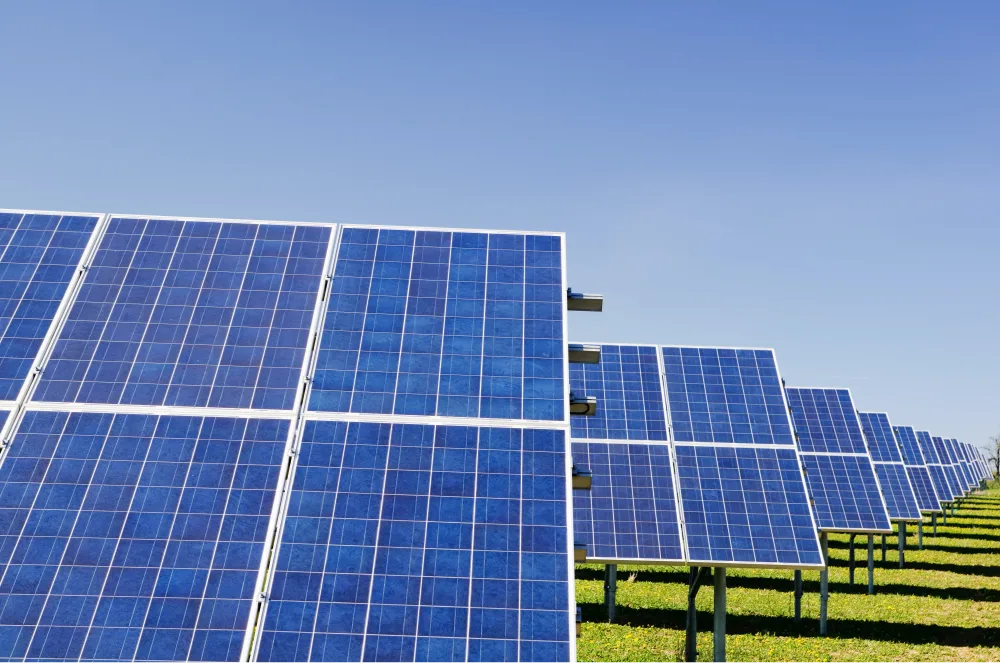
Solar energy
Solar energy harnesses sunlight to generate electricity through photovoltaic (P.V.) panels or concentrated solar power (CSP) systems. Solar energy is both renewable and abundantly available. It can reduce our reliance on fossil fuels and reduce energy costs for consumers in the long run. Best of all: solar doesn’t cause any direct emissions. There are some cons, though. Solar energy is dependent on sunlight, which isn’t always available, and installation costs and space requirements are substantial.
Wind energy
Wind energy uses wind turbines to convert wind power into electricity. Like solar, it’s renewable and clean, doesn’t produce direct emissions, and is rapidly deployable. However, it does depend on variable wind patterns and may have a visual and land impact. The intermittent nature of wind energy does require energy sources or the use of backup sources.
Hydropower
Hydropower utilizes the energy of flowing or falling water to generate electricity through turbines. Hydropower isn’t just renewable and reliable but is perfect for large-scale power generation. Hydroelectric dams have a long lifespan and have additional benefits, including flood control and water management benefits. That’s not to say that there won’t be social and environmental concerns that need to be addressed. Hydropower may have
environmental and ecosystem impacts and can lead to the displacement of communities and habitats. Suitable locations are few and far between, and there may be sedimentation and reservoir management issues that have to be mitigated.
Nuclear energy
Nuclear energy generates electricity through nuclear reactions, typically in power plants. Nuclear plants emit very low carbon emissions and produce very high, reliable energy outputs. On the downside, nuclear power plants are extremely expensive to set up and somewhat controversial due to nuclear waste disposal and safety concerns.
Biomass and biofuels
Biomass and biofuels are derived from organic materials, such as agricultural crops, wood, or algae, and can be used for heat, electricity, or transportation. Biofuels are potentially carbon-neutral or carbon-negative and renewable and utilize organic waste and byproducts. On the downside, it’s not easy to scale production, and there is potential for deforestation and biodiversity loss.
Conclusion: the future of oil
So, “What is oil energy?” It’s a fuel source we are extremely dependent on, even though we need to make every effort to reduce that dependency in order to preserve our environment. Thankfully, there are clean and renewable sources of energy we can utilize that will reduce the greenhouse gasses we produce.
When will we stop using oil?
According to the U.S. Energy Information Administration’s Annual Energy Outlook 2022, petroleum and natural gas will continue to be the primary sources of energy consumption in the United States through 2050, despite the growing popularity of renewables. The reference case in the outlook, which considers current laws and regulations, predicts that overall energy consumption will increase due to population and economic growth.
While renewables, particularly in electricity generation, are expected to experience significant growth, petroleum will maintain the largest share of energy consumption, followed by natural gas.
Transition to renewable energy sources
The future of oil energy is uncertain. On the one hand, oil is still a major source of energy for the world, and it is not expected to be replaced entirely by renewables in the near future. On the other, there is a growing movement to reduce our reliance on oil due to its environmental and geopolitical risks.
Renewable energy sources are becoming increasingly affordable and efficient, and they are not subject to the same price volatility as oil.
The switch to renewables will not be easy. It will require significant investment in new technologies and infrastructure.
Renewable energy sources, such as solar and wind power, are also not always available. This can be a challenge for grid operators, who need to ensure that there is always enough electricity to meet demand. Natural gas can be a viable fuel source as we reduce our dependence on oil energy and our carbon emissions while renewable infrastructure is developed at scale.
Frequently asked questions about crude oil
Can alternative fuels or energy sources replace oil energy completely in the future?
While alternative fuels and energy sources have the potential to reduce dependence on oil energy, completely replacing it in the near future remains challenging. The transition to renewable energy sources like solar, wind, and hydrogen is gaining momentum, but certain sectors, such as aviation and heavy industry, still heavily rely on oil-based fuels.
Achieving a complete replacement would require significant advancements in technology, infrastructure, and the widespread adoption of alternative energy solutions.
How do oil energy influence transportation systems and the automotive industry?
Oil energy has a profound influence on transportation systems and the automotive industry. The majority of vehicles worldwide rely on oil-based fuels, such as gasoline and diesel. Oil energy availability, price fluctuations, and geopolitical factors can affect the cost and accessibility of transportation. The automotive industry’s shift towards electric vehicles and alternative fuels reflects a growing awareness of the need to reduce dependence on oil for transportation.
Are there any geopolitical considerations related to oil energy production and distribution?
Yes, oil energy production and distribution have geopolitical implications. Oil-producing countries often have a significant influence due to their reserves, impacting global politics and international relations. Geopolitical tensions can arise from competition for control over oil resources and the strategic importance of oil supply routes. Dependency on oil imports can also affect a country’s energy security and geopolitical position.
How does oil energy contribute to economic growth and stability?
Oil energy plays a significant role in driving economic growth and stability. It provides a reliable and widely available source of energy for various industries, including transportation, manufacturing, and power generation. Oil exports contribute to national economies, and the industry creates jobs and investment opportunities.
What are some innovative technologies and practices being developed to make oil energy more sustainable?
To make oil energy more sustainable, innovative technologies and practices are being developed. These include advancements in carbon capture, utilization, and storage (CCUS) to reduce greenhouse gas emissions, improved efficiency in oil extraction and refining processes, and the development of biofuels made from renewable sources. Research is ongoing to explore the potential of hydrogen as a cleaner fuel derived from oil.
What is the current global demand for oil energy, and how is it projected to change in the future?
According to the International Energy Agency (IEA), global oil demand is expected to reach 101.6 million barrels per day (mb/d) in 2023, up from 97.9 mb/d in 2022. However, the IEA also projects that global oil demand will peak in the mid-2020s and then decline gradually. This decline is being driven by a number of factors, especially as renewable sources, such as solar and wind power, are becoming increasingly affordable and efficient, and they are displacing oil in some markets.
Written by Graham Lumley
Graham Lumley, Digital Marketing Manager at BKV Energy, leads digital and traditional marketing strategies, focusing on educating Texans about the state's deregulated energy market. With over 8 years of marketing experience, he creates content to help consumers understand and save on their energy bills, bringing a fresh and dynamic approach to the industry.
Related articles
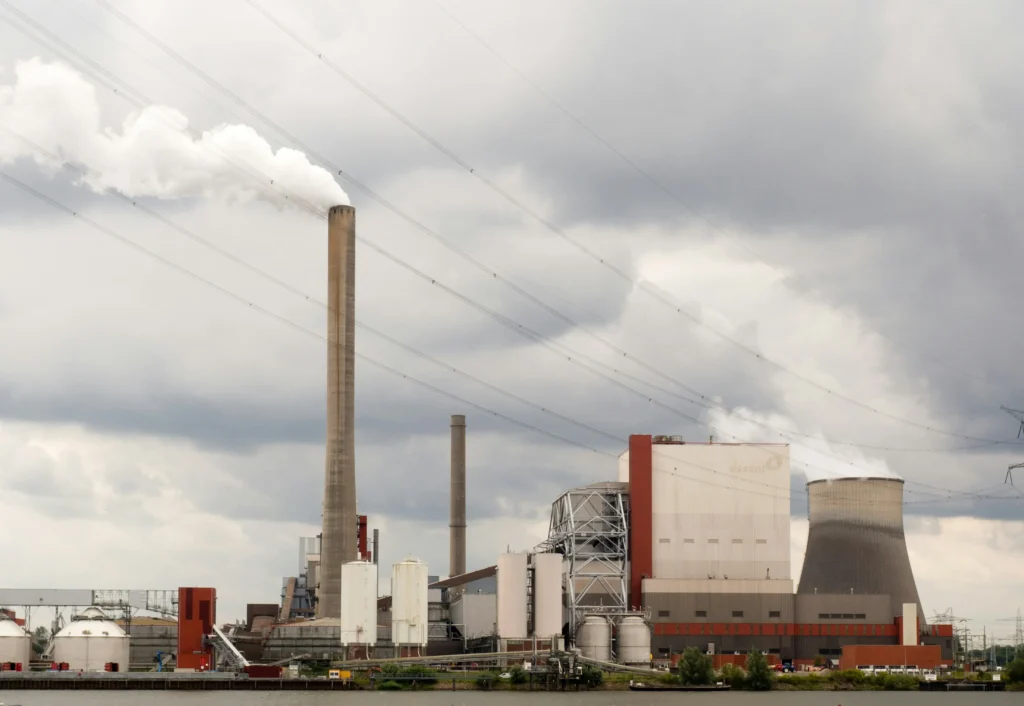
Is Coal Renewable?
3 minute readCoal is a natural energy source that has played a crucial role in powering human development for centuries. It forms
Get $50 off your electric bill!
Use code BKVEJOINUS50
Enter your zip code to shop BKV Energy's affordable, fixed-rate Texas electricity plans. Use the promo code for $50 off your electric bill.
